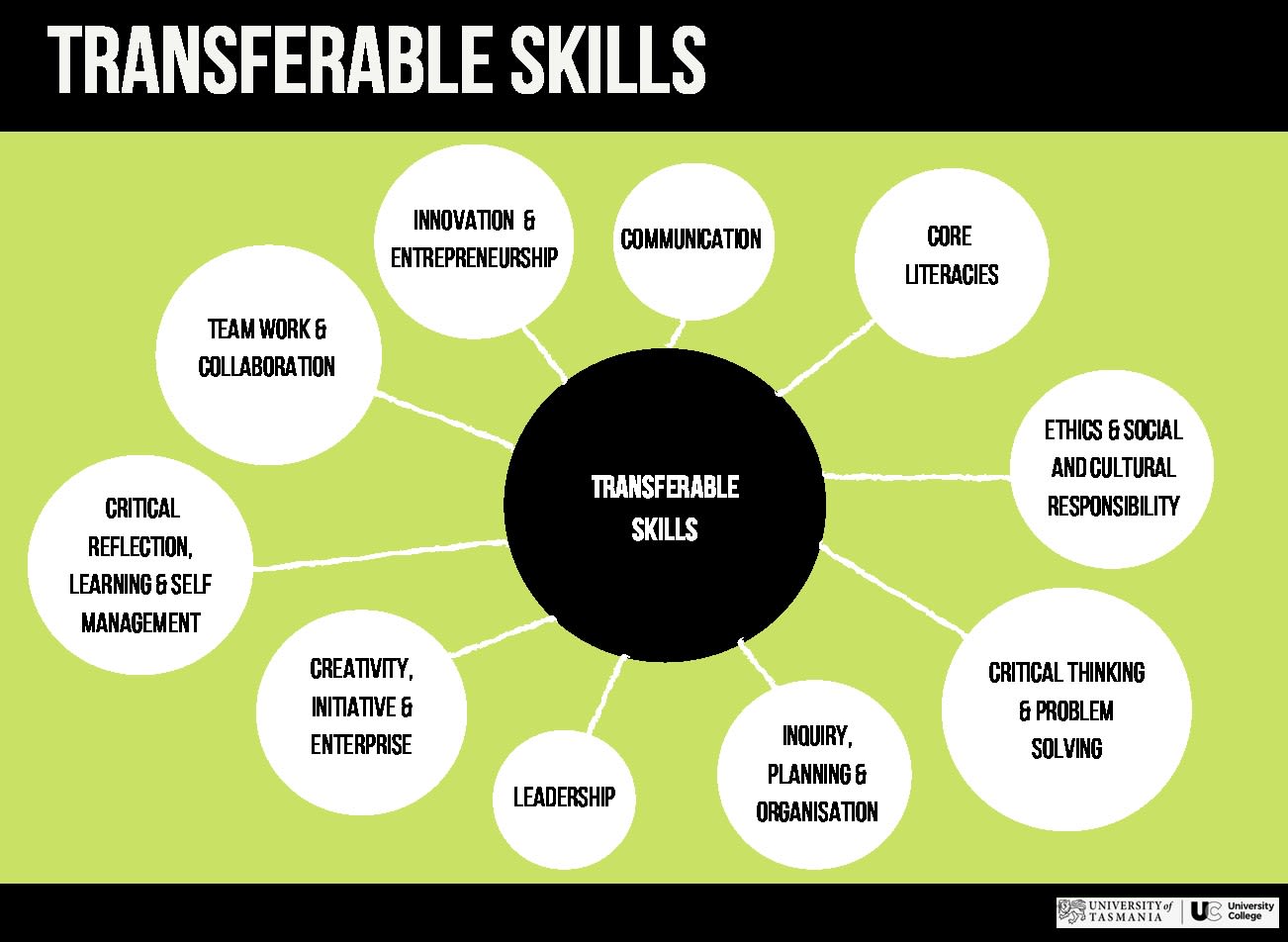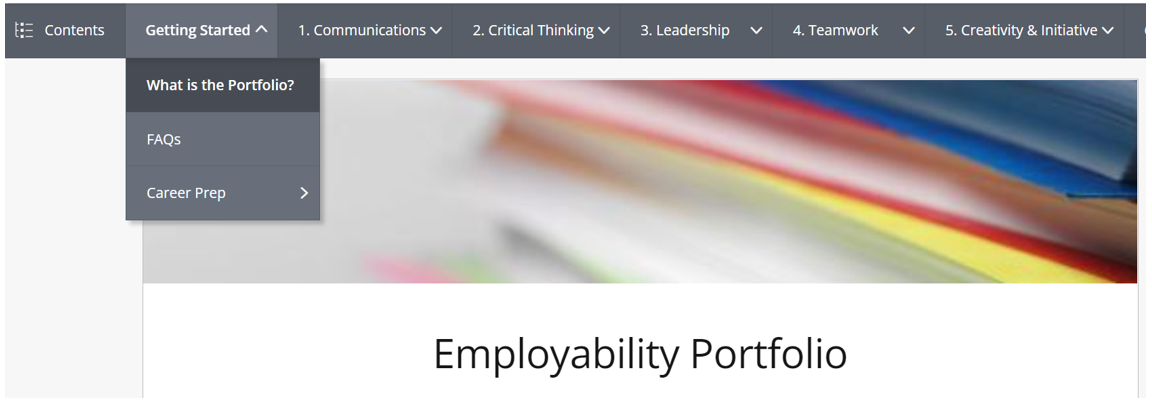The Employability Portfolio
Experiential Education

Introduction
This module follows on from The University College (UC) Approach which introduced the way we focus on practice-based learning in every unit and engage in more hands-on, work-related or project-based activities. It follows on by going into more detail about a key part of the UC approach, which is to build on your Employability Portfolio i.e., a portfolio that showcases professional, academic and personal development. According to Stefani et al. (2007):
Portfolios, in education and personal or professional development, are collections of documents and other objects that can be shown as evidence to support claims a person makes about what they know, what they have achieved and what they can do."
The module also explains how the employability portfolio is ‘created’ and ‘housed’ in PebblePad, and has a professional development plan embedded.
Overall, this module:
- Explains what the employability portfolio is
- Details the use and purpose of portfolios in learning
- Provides examples of what to upload as evidence/assets/artefacts or items – to showcase skills development
- Provides information on PebblePad (to help you understand how to use it and how to find support).

What is the employability portfolio?
The employability portfolio is a collection of evidence that demonstrates your progress, learning, goals and achievement. But, it is also a place where you reflect and develop critical analysis skills around your professional, academic and personal development.
In your employability portfolio, you upload evidence of skills development as well as reflect upon and highlight key learnings from your coursework and experiences. The main applied work skills and attributes that employers are looking for, and that you can highlight in your portfolio, are in the following areas:
- communication
- teamwork
- critical thinking
- leadership
- creativity and initiative
- ethics and social and cultural responsibility
- planning and organisation, and
- innovation and entrepreneurship.
Your portfolio is a place to showcase:
- How you have developed various employability skills and attributes (these are skills that are ‘transferable’ to any job content – see above examples)
- The way you have applied your learning in practice
- How you have developed skills in a chosen field e.g., business, health, science, design, technology, agribusiness, or construction
Your teachers and the coaches will support you to develop your employability/transferable skills during your studies with University College. For a mind map of the transferable skills categories, see image below..

If you haven’t yet opened your portfolio, click the button below to review these categories to gain some ideas on - what skills you need to develop and how to showcase them.

What evidence do I upload?
Upload as many pieces of evidence that you can to your portfolio from the beginning through to the end of your studies. You will complete learning activities, assessment tasks, projects, placements and engage in many different experiences. What you do and/or create at these times, you can use as ‘evidence’ and upload it to your employability portfolio. Please see below some examples of what we mean when we say ‘evidence/artefacts/items/assets’.
Evidence includes various pieces of work, such as:
Journal Entries, Explanatory Notes and Reflections
In some cases, you will need to write brief journal entries or explanatory notes to accompany evidence. You will do this to reflect on the relevance and the meaning behind the artefact (because this is how you develop/build on critical analysis skills, which are essential for ‘deeper learning’).
Your journal entries or explanatory notes will typically describe/detail or analyse:
- What the evidence/artefact represents
- What the purpose or meaning of the learning experience was
- What skills or knowledge you developed
- How you used discipline tools and techniques in practical situations
You will also need to complete reflections. These can be in written form as blogs or journal items, or as podcasts or videos.
In short, your reflections will typically describe:
- The learning moment (i.e., what you experienced)
- What you actually learnt
- What you would do differently in the future (based on what you learnt)

Why do I need a portfolio?
If you collect and upload this evidence from the beginning to the end of your studies, you will finish at UC with a complete employability portfolio. It will then be a valuable resource to:
- Showcase achievement
- Complete job applications
- Prepare for interviews
- Evidence selection criteria
- Apply for advancement
- Pursue further study
- Highlight the development of knowledge, behaviours and attributes, and skills (including transferable skills)
- Evidence learning
Key benefits of building your employability portfolio are:
- It develops critical reflection
The entire process of selecting artefacts and thinking critically about their relevance and meaning takes your learning beyond the surface level - It transforms your learning
Your learning becomes transformed when you reflect on experiences as you have to analyse what happened (not just describe it) and think about how that might change future action - You leave with evidence that can help with careers and study
You will finish your studies with evidence of what you can do and what you know, which can assist in future or current employment (and/or opportunities for further study) - For assessment
At UC, assessment tasks are often created in workbooks in PebblePad that you can add to your employability portfolio (which must be submitted for assessment)

The professional development plan
The professional development plan is a valuable part of your employability portfolio as you record your personal, career and educational goals.
It is a document that you will review and change throughout your study because as you reach one goal you set another. We recommend that you focus firstly on your personal learning goals, as fulfilling these increases the chances of fulfilling career aspirations.
Why are professional development plans important?
- The plans are a tool for setting, monitoring and reviewing your learning progress against time-frames
- Having a plan enables you to take control of and be responsible for your learning
- The plan is a ‘living document’ so it will grow and evolve as you move through your studies
- It will be useful for your career development, as it highlights the skills and knowledge you have developed or obtained over time
In terms of future employment, if you record and monitor your goals and actions in your professional development plan, you can use that experience to highlight key essential skills to employers. For example, you can demonstrate your ability to plan, organise and manage time frames for work, study and personal commitments.
Starting your Professional Development Plan
To begin working on your professional development plan, click on the first tab on the top left that says, ‘Getting Started’, then hit ‘Career prep’, which will then provide you with the option to open your professional development plan (see image below).

You can save the plan as you go and come back to it during your studies. The academic coaches can provide support to you for your plan, so please reach out in need: UC.P&PCoach@utas.edu.au

PebblePad
PebblePad is your personal online learning space. It is the space we used to create your employability portfolio.
In PebblePad, you can collect, curate, create, communicate, and share achievements, personal capabilities and professional skills.
University College have utilised one component of what PebblePad can do - to develop the employability portfolio for you. However, there is no expectation at all that you will be a PebblePad expert. Our plan is to support you to become familiar with the basics over time.
The easiest way to access your portfolio - which has already been created for you – is to first log in to PebblePad as a UTAS student, by clicking:
For step by step instructions, go back to the module ‘The University College Approach’
Once you have opened and saved your employability portfolio, and reviewed the expectations/guidelines, please see the module below on ‘portfolio artefacts’:
The module on artefacts details the types of evidence you can collect and upload to your portfolio. We call evidence ‘artefacts’, or ‘assets’, ‘items’, or ‘objects’.
Developed by Dr Cherie Hawkins, University College, UTAS, and updated June 30th 2022.